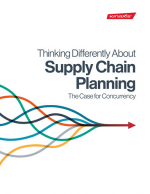Supply Chain Risk Management: Knowing the Risks — Mitigating and Responding for Success
If the last few years have shown us anything it is that the supply chain is being exposed to more and more risk.
Introduction
Risks are a part of life and are involved in everything we do.
Some people are very risk adverse and won’t do anything that has any risk associated with it. Others thrive on risk and will seek out adventures like rock climbing, sky diving, and racing despite clear and obvious risk. People take risks because there is a potential reward.
Even chronic risk takers, however, mitigate their risk by employing safety measures. Rock climbers use safety ropes. Race car drivers wear flame retardant suits and helmets. Skydivers have reserve parachutes that open automatically if the main parachute fails to open. There is still risk, but when the right mitigation strategy is employed, risk can be reduced to a manageable level.
In supply chain there are many decisions that while risky, could result in significant benefit to the company; introducing a new product, expanding into different markets, outsourcing manufacturing operations. How we manage those risks separate those who succeed from those who fall short.
Companies that make decisions without thought to what the risks could be or take risks without planning mitigation strategies have a higher potential to fail. Conversely, companies that take risks and plan for them (have mitigation strategies defined should the risk materialize) are likely to be more successful. But having a mitigation strategy isn’t enough.
What is also required is a strategic competency in responding to the unexpected. This ability is a combination of agile processes and tools that allow a company to recognize an event, assess the impact, and respond accordingly.
If the last few years have shown us anything it is that the supply chain is being exposed to more and more risk. Some of this risk can be managed through better supply chain design; assessing where supply “choke points” are and building in supply and logistical redundancy.
Other risk, however, must be managed through better response capabilities.
What’s Related




Favorites





